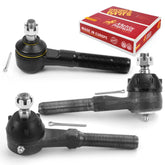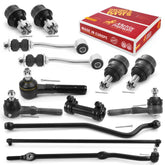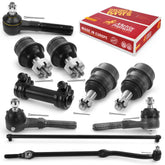Safety Tips When Working on Suspension
Suspension systems are crucial for vehicle safety and stability. They absorb shocks and vibrations from the road, providing a comfortable and controlled ride. It's important to understand how suspension changes can impact overall safety. Prioritizing safety is essential when working on a suspension system. Here are some safety tips to keep in mind.
- Use Proper Personal Protective Equipment (PPE): Wear appropriate safety gear, including safety glasses, gloves, and clothing that covers your skin. Depending on the specific tasks, you might also need ear protection and a respirator for dust and fumes.
- Work in a Well-Ventilated Area: If you're working indoors, make sure the area is well-ventilated to prevent the buildup of fumes from chemicals or welding.
- Use Proper Tools: Always use the correct tools for the job. Using improper tools can lead to accidents and damage to components. Make sure your tools are in good condition and properly maintained.
- Lift and Secure the Vehicle: If you need to lift the vehicle to access the suspension components, use proper lifting equipment like hydraulic jacks or lifts. Always use appropriate jack stands or support structures to securely hold the vehicle in place before working underneath.
- Release Pressure: If your suspension system uses air springs, hydraulic components, or other pressurized elements, make sure to release pressure before disassembly. This will prevent sudden component movement or fluid release.
- Follow Manufacturer Guidelines: Consult the vehicle's manufacturer guidelines and repair manuals for accurate information on disassembly, reassembly, torque specifications, and safety precautions.
- Work Methodically: Take your time and work in an organized manner. Keep track of which components you've removed and where they belong. This will help prevent mistakes during reassembly.
- Avoid Excessive Force: Be cautious when using force to remove or install components. Excessive force can lead to slipping, injury, or damage to parts.
- Handle Chemicals Safely: If you're using cleaning agents, lubricants, or other chemicals, follow the manufacturer's instructions and handle them in a well-ventilated area.
- Stay Informed: If you're not experienced with suspension work, consider seeking guidance from professionals or experts. There are online forums, tutorials, and resources where you can ask questions and learn from others' experiences.
- Inspect Components: Before reassembly, inspect all parts for signs of wear, damage, or corrosion. Replace any worn or damaged components to ensure the safety and proper function of the suspension system.
- Test Before Road Use: After completing your work, take the time to test the suspension system in a controlled environment before using the vehicle on the road. This can help identify any issues or adjustments that need to be made.
Finally, for the safety of your vehicle and those on the road, you should always consider choosing the best fitting and robust suspension parts. Metrix Premium Chassis Parts offers wide range of premium steering and suspension parts for all your repair needs. Should you have any questions, do not hesitate to reach out to our team of experts.









